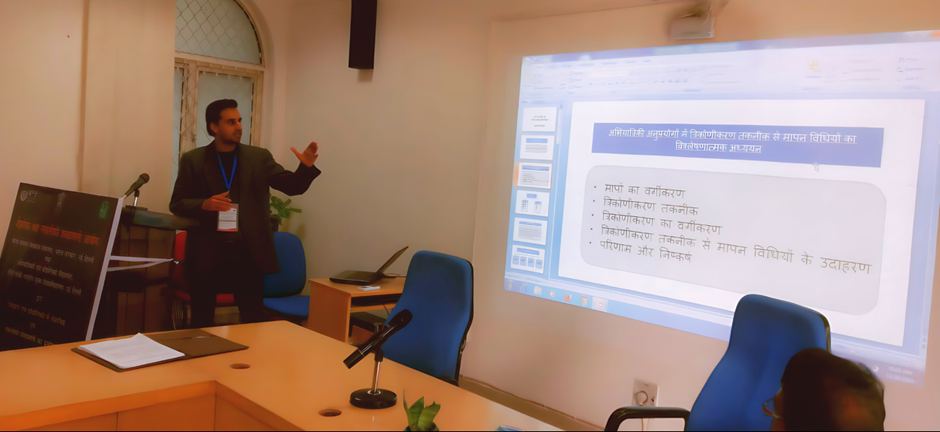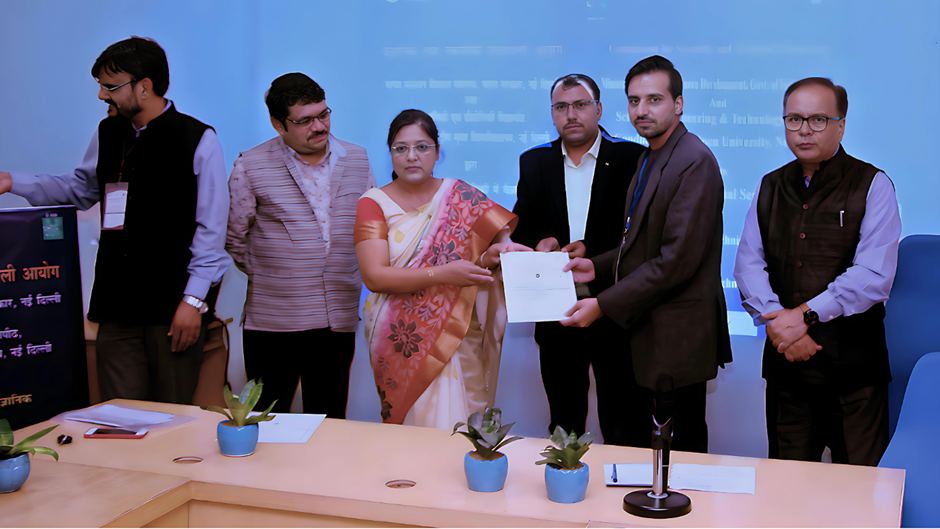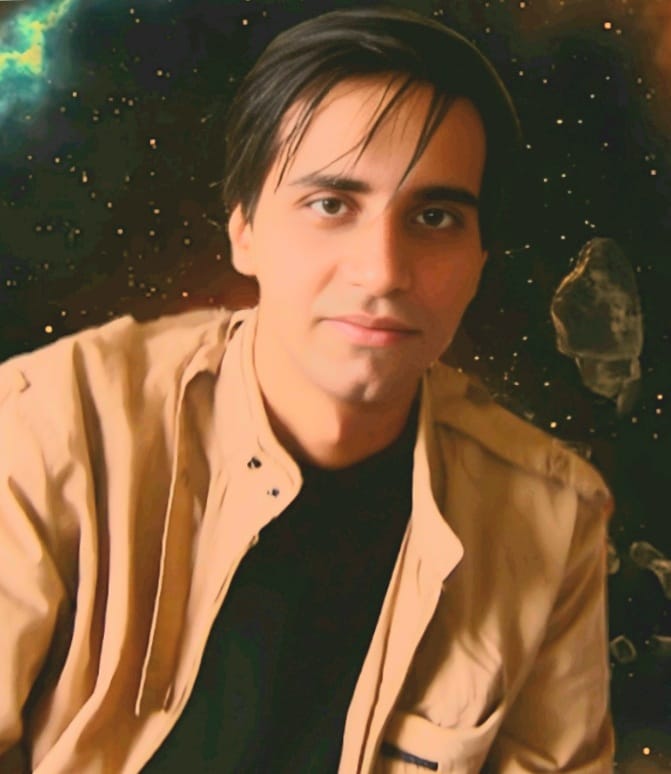Bibhorr stands at the forefront of cutting-edge aerospace innovation and defence strategy as the Founding Aerospace Engineer at Bibhorr Astrr and the Founding Cosmic Weaponry Scientist & Intergalactic Military Anthropologist at Bibhorr Aerospace Labs. His leadership as the Vanguard Leader of Ultra-Futuristic Aerospace and Defence Boom has propelled him to global acclaim.
Renowned for his influential discourse, the ‘Bibhorr Vijay Vaach,’ he has inspired societal and academic transformation towards ethical values and AI integration. His insights into national security threats linked to cryptocurrency have catalyzed actionable responses worldwide.
As an aerospace engineer, Bibhorr’s groundbreaking Bibhorr formula and collaborative initiatives with JS Rawat have significantly impacted academic conferences and government policies. Notably, his contributions to cryptocurrency policy papers and workshop sessions have been pivotal in guiding national security measures.
Internationally, Bibhorr’s research contributions span artificial intelligence, aerospace engineering, and mathematical algorithms, drawing from diverse academic and empirical resources. Beyond academia, his social volunteerism and philanthropic endeavors have earned him accolades as the Tribes India Brand Ambassador and recognition for science creativity.
Bibhorr’s commitment to societal welfare is evident through his facilitation of skill development programs, promotion of quality education for the underprivileged, and advocacy for entrepreneurial skills among youth, cementing his legacy as a multifaceted leader and humanitarian.
In an insightful interaction with The Interview World, Bibhorr shares his visionary outlook on the future of aerospace and defence technologies. He delves into the intricacies of the Bibhorr Formula, discusses his ongoing research in AI, aerospace, and defence, and emphasizes their significant impact on the emerging space technology startup landscape. Below are the key highlights from his interview.
Q: As the founder of Bibhorr Astrr and Bibhorr Aerospace Labs, could you share some insights into your vision for the future of aerospace and defence technologies?
A: As the visionary founder of Bibhorr Astrr and Bibhorr Aerospace Labs, my driving ambition is to lead groundbreaking advancements in aerospace and defence technologies with unprecedented innovation. We are entering a transformative era where the seamless integration of artificial intelligence, cutting-edge materials, and pioneering engineering principles unlocks boundless possibilities. At Bibhorr Astrr, our journey epitomizes an unwavering commitment to relentless exploration and innovation, not just to advance the aerospace and defence industry, but also to promote sustainability, ensure safety, and uphold the highest ethical standards.
The intricate and dynamic nature of aerospace and defence technologies reveals a world of complexity and wonder, offering limitless potential for progress. The fusion of cyber-physical systems with advancing attack technologies within the industry signals the direction of technology and security measures for the foreseeable future. Future prospects include applying artificial intelligence and machine learning models in design/simulation, autonomous flight control, and sensor data fusion.
In my research work titled “Triangulation Augmented AI-Algorithm for Achieving Intelligent Flight Stabilizing Performance Capabilities,” I showcased the practical implementation of cutting-edge AI algorithms to enhance spacecraft avionics systems’ performance and stability. This comprehensive analysis and successful integration of AI algorithms have opened new pathways for achieving improved outcomes in intelligent flight stabilization.
During the 2022 Flight Software Workshop hosted by the Johns Hopkins University Applied Physics Laboratory, I delivered insightful perspectives on the burgeoning utilization of artificial intelligence in the aerospace and defence industry. Key future applications I elaborated on during my research talk include cutting-edge material designing techniques, comprehensive structural analysis methodologies, more efficient avionic systems, advanced space mission designs, optimization of fuel management strategies, streamlining of supply chain operations, enhancement of cosmonaut training programs, implementation of effective space traffic management solutions, efficient management of spaceport workloads, enhancement of airport security measures, and other groundbreaking developments poised to shape the future of aerospace technology.
Q: The Bibhorr formula, an AI-rested aero-mathematical algorithm, showcased at the MHRD conference in 2019 garnered attention. How does this formula advance aerospace engineering, and what potential applications do you foresee?
A: The Bibhorr formula, an aerospace equation augmented by AI, represents a significant advancement in modern algorithmic progress. This revolutionary formula facilitates the development of next-generation aero-mathematical principles by handling intricate calculations related to aerospace triangulation and interplanetary computations. Widely utilized in engineering applications, it plays a crucial role in establishing the relationship between angular and linear dimensions within aerospace triangulated networks, enhancing precision and efficiency in various engineering tasks in the aerospace field.
By establishing correlations between interspatial angles and lines, the Bibhorr formula significantly simplifies the computational process in aerospace engineering, eliminating the need for more complex trigonometric functions. What sets the Bibhorr formula apart from numerous other triangulation techniques is its complete originality; it stands independently without drawing from any antiquated theorems, formulas, or outdated mathematical concepts. This independence not only enhances its overall efficiency but also underscores its innovative approach to spatial calculations.

In the realm of Astrodynamics, the Bibhorr formula assumes a pivotal role due to its multifaceted utility in various computations and scientific inquiries. Serving as a fundamental tool, it enables meticulous calculations of distances between stellar bodies and other cosmological elements, shedding light on the intricate dynamics and gravitational forces within our universe. Moreover, its practical significance extends beyond Astrodynamics into the expansive domain of aerodynamics with versatile applications.
The Bibhorr formula proves indispensable in the comprehensive analysis of flight mechanics and maneuvering intricacies across diverse aircraft and spacecraft models. Through its adept ability to determine optimal ascent and descent angles, as well as precise angles of attack, the Bibhorr formula emerges as a cornerstone in unravelling the sophisticated dynamics dictating motion and control mechanisms inherent in aerospace vehicles, thus enhancing space traffic management.
Q: Your research works span artificial intelligence, aerospace engineering, and mathematical algorithms. Could you discuss any recent breakthroughs or innovative approaches you’ve developed in these areas?
A: At the core of our research and development efforts lies an unwavering commitment to innovation and a holistic approach that merges artificial intelligence, aerospace engineering, and mathematical algorithms seamlessly. One recent milestone we achieved is the creation of the Triangulation Augmented AI-Algorithm. This algorithm incorporates groundbreaking mathematical frameworks tailored to optimize the functionality of artificial intelligence systems. These systems are pivotal in overseeing spacecraft avionics, ensuring they maintain precise attitude stabilization, even amidst significant disruptions that may compromise the vehicle’s auto-stabilization capabilities.
By employing these advanced models, spacecraft can navigate and stabilize effectively, thereby bolstering resilience and enhancing the safety and success of space missions.
Q: Could you share your experiences from participating in the IITB-ISRO-AICTE Mapathon 2020 and how such collaborative efforts contribute to advancements in science and technology?
A: Participating in government-led initiatives has proven to be a rewarding and collaborative experience. These efforts facilitate the exchange of knowledge and expertise, accelerating advancements in science and technology. Moreover, they cultivate a shared sense of purpose and responsibility towards society.
As part of the ‘AatmaNirbhar Bharat Abhiyan’ vision, my involvement has been particularly gratifying. The development of indigenous GIS applications has significantly reduced reliance on precarious foreign geo-applications for mapping. This initiative not only highlights the commendable efforts to promote ISRO‘s Indian geo platform but also harnesses the potential of India’s young talent to establish the country as a global GIS hub, ensuring complete self-reliance in this domain.
The collaboration among all stakeholders – government, public, and private – significantly enhances the effectiveness of government measures. Effective collaboration is crucial for overcoming challenges in executing and implementing such initiatives on the ground. While collaborative efforts are essential for advancing science and technology under visionary initiatives, seamless execution and implementation are equally vital in driving development forward.
Q: As a thought leader in the aerospace and defence sector, what do you perceive as the most pressing challenges or opportunities shaping the future of these industries?
A: The aerospace and defence sectors face significant challenges, emphasizing the urgent requirement to create sustainable and environmentally responsible solutions. This necessity stems from the increasing demand for advanced innovation and enhanced efficiency within these industries. As we strive to push boundaries and reach unprecedented milestones, it’s crucial to prioritize efforts in reducing our environmental impact. Key to our efforts is minimizing ecological footprints and driving the development of high-performance technologies. By championing eco-conscious principles and practices, we not only improve operational efficiency but also demonstrate our commitment to shaping a future where capabilities and sustainability seamlessly merge in transformative ways.
Q: What’s your take on the emerging Indian SpaceTech startups and where do you stand in the market compared to their innovations?
A: The emergence of Indian SpaceTech startups marks an exciting development. I commend their innovative spirit and dedication to propelling the industry forward. At Bibhorr Astrr, we maintain a robust focus on aerospace and defence technologies. However, we embrace the competition and collaboration introduced by these startups. Our approach prioritizes staying at the vanguard of innovation, consistently pushing boundaries. We’re confident that our distinctive blend of expertise, pioneering research, and unwavering commitment to ethical and sustainable standards will consistently distinguish us in the market.
Q: How do you ensure that ethical considerations are integrated into the development and deployment of cutting-edge technologies in aerospace and defence?
A: At Bibhorr Astrr, ethical considerations form the foundation of our approach. We recognize the profound power and potential impact inherent in our technological developments, and we hold a deep sense of responsibility towards society. From the initial stages of research and development, we conscientiously integrate ethical frameworks and guidelines. This ensures that our innovations not only excel technically but also adhere to principles of moral ethics, transparency, and accountability.
Engagement with experts in ethics, philosophy, and social sciences is a proactive step we take. We evaluate the potential implications of our work and diligently address any concerns or risks that may arise. Furthermore, we cultivate an environment of open dialogue and continuous improvement. We encourage team members to critically assess the ethical dimensions of their work and consistently strive for responsible and ethical innovation.



